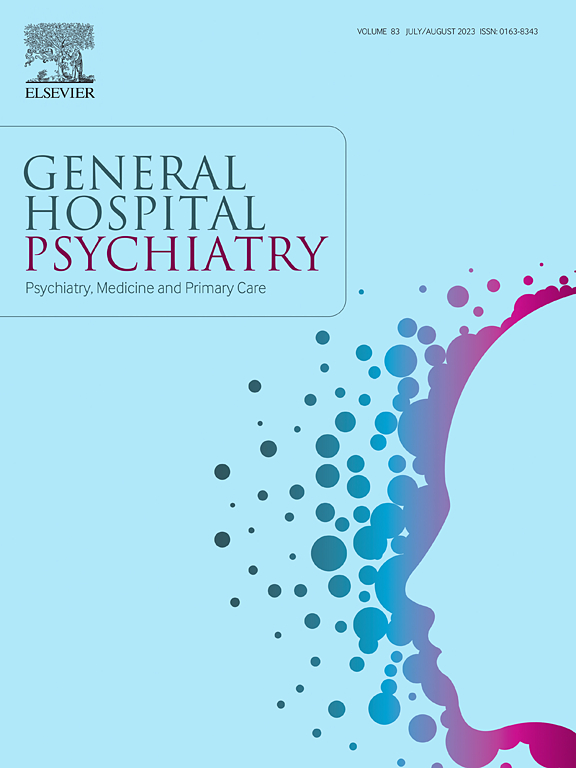A guideline-based perspective on neurostimulation in treatment-resistant obsessive-compulsive disorder: An international overview
IF 3.7
2区 医学
Q1 PSYCHIATRY
引用次数: 0
Abstract
Background
Obsessive-compulsive disorder (OCD) is a severe psychiatric illness associated with substantial psychosocial burden. Although evidence-based first- and second-line treatments are often effective, a significant proportion of patients continue to experience treatment-resistant symptoms. In such cases, brain neurostimulation is gaining increasing attention. This study aims to provide a structured overview of national and international clinical guidelines for the management of treatment-resistant OCD, with a particular focus on neurostimulation techniques.
Materials and methods
Relevant clinical guidelines were identified and compared with respect to their recommendations on various neurostimulatory procedures. Among the approaches examined were transcranial magnetic stimulation (TMS), electroconvulsive therapy (ECT), Deep Brain Stimulation (DBS), ablative neurosurgical procedures, and further techniques such as transcranial direct current stimulation (tDCS).
Results
Across guidelines, DBS is regarded as a potentially effective treatment option for carefully selected, severely affected patients. Its use is restricted to specialized centers and requires an interdisciplinary treatment approach. Ablative procedures are endorsed by certain guidelines solely in exceptionally severe cases. The evidence basis for TMS remains inconsistent, though certain stimulation protocols have shown short-term efficacy. For ECT and tDCS, current evidence is insufficient to support their use in targeting core OCD symptoms.
Conclusions
Overall, the reviewed guidelines emphasize the need for clearly defined indications, standardized treatment protocols, and continuous scientific evaluation. Invasive procedures are not considered standard treatment but represent highly specialized therapeutic options within interdisciplinary care frameworks.
基于指南的神经刺激治疗难治性强迫症:国际综述
背景:强迫症(OCD)是一种严重的精神疾病,伴有严重的社会心理负担。尽管循证一线和二线治疗通常有效,但仍有很大一部分患者出现治疗抵抗症状。在这种情况下,脑神经刺激正获得越来越多的关注。本研究旨在为治疗难治性强迫症的管理提供国家和国际临床指南的结构化概述,特别关注神经刺激技术。材料和方法确定了相关的临床指南,并比较了它们对各种神经刺激手术的推荐。研究的方法包括经颅磁刺激(TMS)、电休克治疗(ECT)、深部脑刺激(DBS)、烧蚀性神经外科手术以及进一步的技术,如经颅直流电刺激(tDCS)。结果:在指南中,DBS被认为是精心挑选的严重影响患者的潜在有效治疗选择。它的使用仅限于专业中心,需要跨学科的治疗方法。消融手术只有在特别严重的情况下才得到某些指导方针的认可。尽管某些刺激方案显示出短期疗效,但颅磁刺激的证据基础仍不一致。对于ECT和tDCS,目前的证据不足以支持它们用于治疗核心强迫症症状。结论总的来说,修订后的指南强调了明确适应症、标准化治疗方案和持续科学评价的必要性。侵入性手术不被认为是标准治疗,但在跨学科护理框架中代表了高度专业化的治疗选择。
本文章由计算机程序翻译,如有差异,请以英文原文为准。
求助全文
约1分钟内获得全文
求助全文
来源期刊

General hospital psychiatry
医学-精神病学
CiteScore
9.60
自引率
2.90%
发文量
125
审稿时长
20 days
期刊介绍:
General Hospital Psychiatry explores the many linkages among psychiatry, medicine, and primary care. In emphasizing a biopsychosocial approach to illness and health, the journal provides a forum for professionals with clinical, academic, and research interests in psychiatry''s role in the mainstream of medicine.
 求助内容:
求助内容: 应助结果提醒方式:
应助结果提醒方式:


